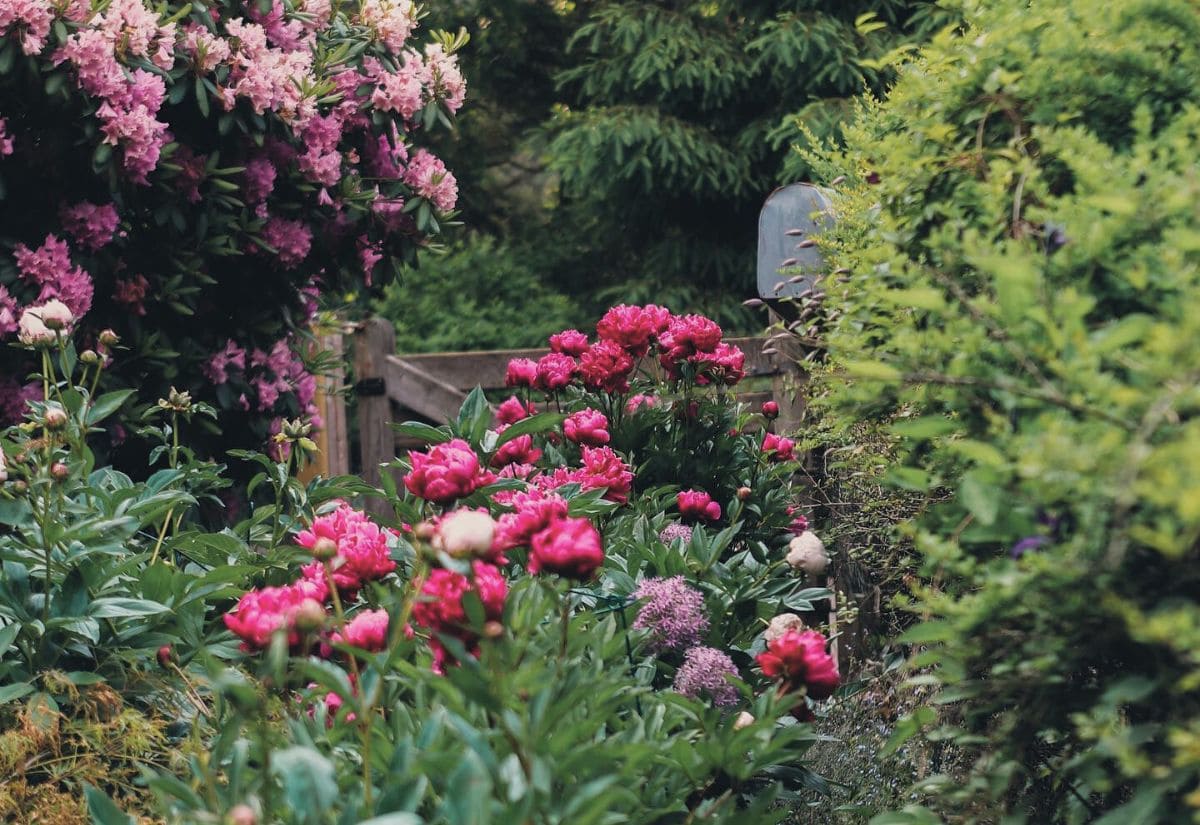
As the first breath of winter reaches your garden, your peonies need to be safe from the harsh weather, and you need to give them some tender loving care now, before fall is over… Get this right, and your herbaceous, Itoh (or intersectional) or tree Paeonia will be ready to grow new shoots, foliage and open flowers when spring comes back!
To be honest, it is not hard to give peonies their end-of-season care; these plants are low maintenance and high performance, but there are some pre-winter care that can make all the difference for your garden and borders next year – and their blooms.
From improving soil to pruning and mulching, and in rare cases covering intersectional or tree varieties, and if you are still in time, divide and propagate peonies, fall is the time to act, and here is how to do it like a professional.
Types Of Peonies And End-Of-Season Care
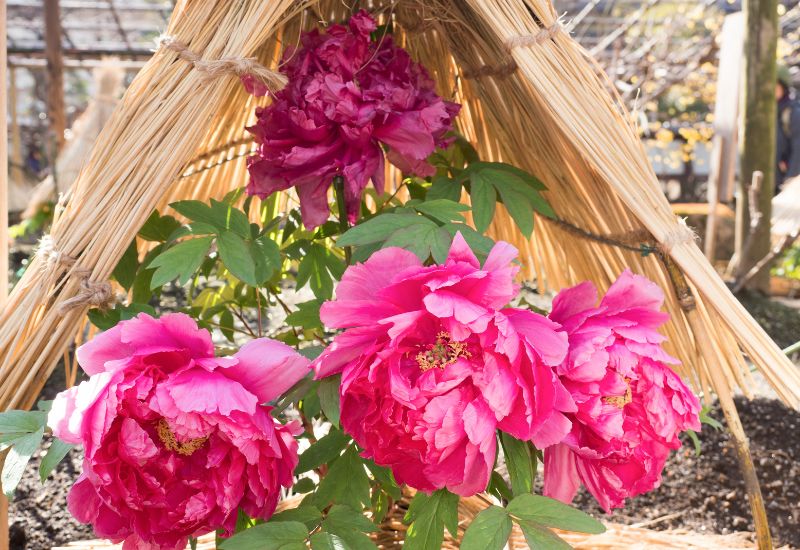
What you do to protect your peonies from winter weather depends on the type of Paeonia you grow in your garden. But not everything… Improving soil and mulching will be necessary for all, but pruning and division, as well as covering vary.
So, first, a reminder of the three types of peonies you can grow:
So, the very first thing you need to do to give your peonies their end-of-season care is to check which of these types of Paeonia you are growing in your garden.
8 Must-Do Steps to Keep Your Peonies Thriving Through Winter
By providing the right pre-winter care to your peony bushes in the fall, you can help them enter dormancy correctly and prepare them to bloom more beautifully than ever in the coming spring, so here’s what to focus on for fall peony care.
1: Improve Your Peonies’ Soil Drainage To Protect Their Roots From Rotting Over Winter
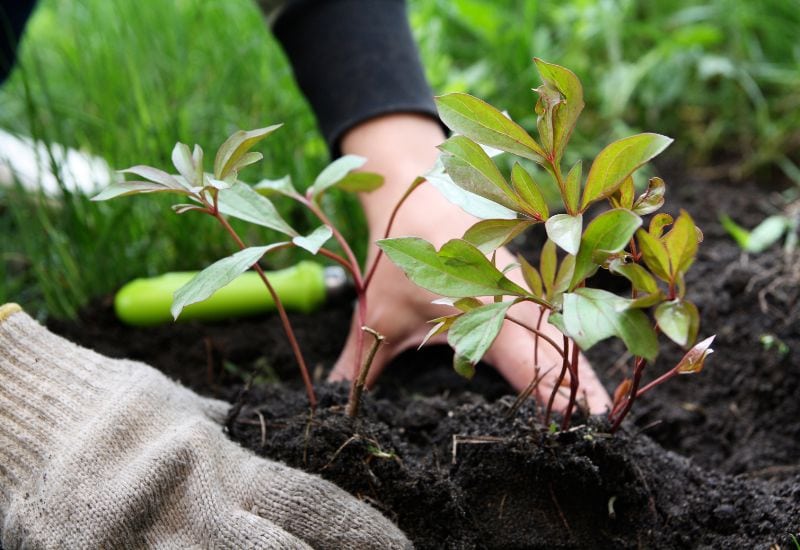
The first advice I have for you is to improve the soil’s drainage to protect the roots of your peonies over winter. You can start right now, and it is quite simple…
You only need to spread about 1 inch (2.5 cm) of coarse (gardening) sand, or mix it with gypsum if your soil is heavy clay, at the feet of your peonies. Make sure you reach at least the dripline, which is where the branches reached at the peak of their growth.
This will protect your peonies’ roots from pockets of stagnant water, which can cause rotting, and winter is usually the rainy season in most climates.
The question is, do you need to do it? the answer is yes, if the soil does not already have excellent drainage. But remember that the water draining qualities of soil can lower during the season. So, check it before you take a decision.
You can do this at any time during fall, before mulching, but even if you are late, don’t worry, the sand and gypsum will still penetrate into the soil in a matter of weeks.
Next, we need to prune them, but each type has its own technique…
2: Prune Herbaceous Peonies In Fall, By Cutting Them Back
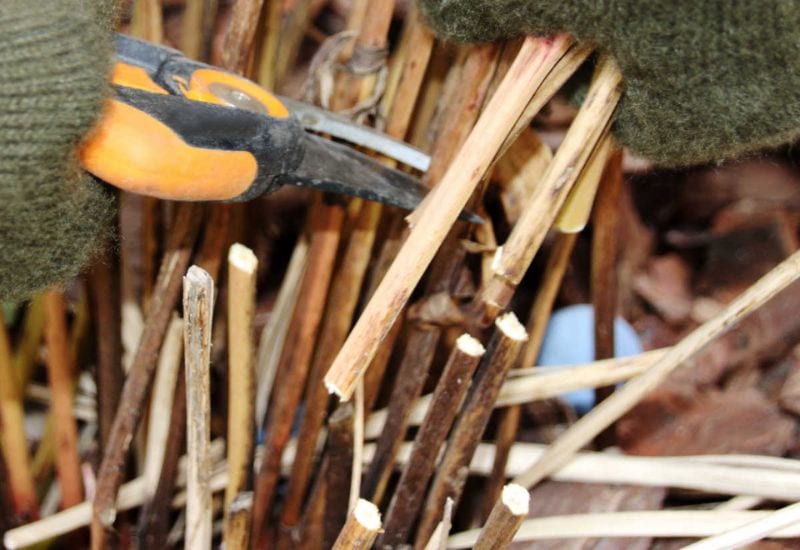
Herbaceous peonies literally die back at the end of the season. But you don’t need to wait till the whole plant has turned brown. As soon as most of the foliage has yellowed and browned you can cut them back.
We do this to avoid infections, which can catch onto the dead foliage and then spread to the roots…
I like to use loppers to prune herbaceous, because they are quite big and dense plants, but you can use secateurs if you wish (no need to buy loppers for this…). And it is simple…
That’s it! Only a final tip, this could be a good time to check the stalk bases for molds, in case, use a super effective cheap and natural fungicide, like neem oil (a teaspoon or so in a spray bottle) to stop them now, before winter comes and before you mulch!
3: A Light Trim To Your Tree Peonies Is Enough To Protect Them From Winter
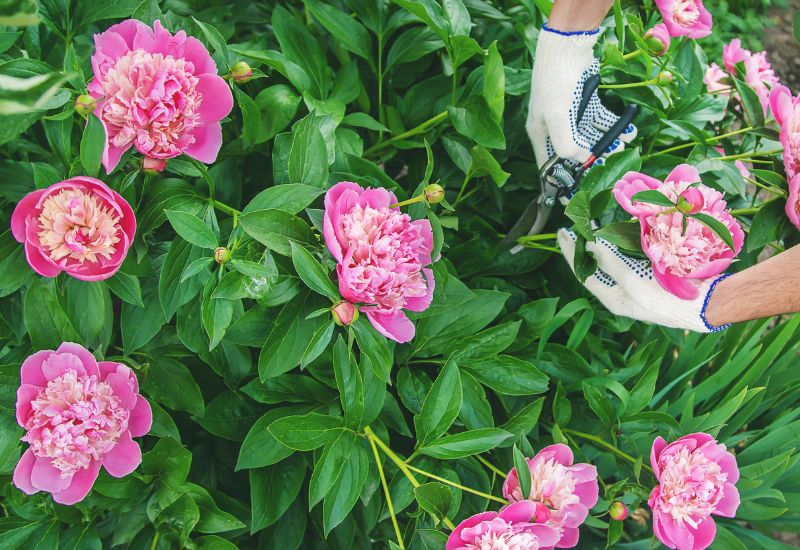
If you have to “go down heavy” with herbaceous varieties, tree peonies need you to use a light touch to prepare them for winter… This is mainly a cleaning operation…
Here’s what you should remove:
Remove all you have pruned and this is all tree peonies need at this stage. The real pruning, to shape them, is best done in spring. Some more branches may die over winter, and you can cut them off next year.
4: Prune Your Intersectional Peonies, Leaving Old Growth On Them For Winter
Because intersectional (or Itoh) peonies are a cross between herbaceous and tree varieties, their fall pruning too is halfway between what you did with them… The key idea is to remove new growth and keep old growth. But in detail here is how you do it.
…And your intersectional peonies will be safe over the winter months.
Again, this is a good time to check for molds and take measures to get rid of them.
And now, it could be a good time to divide and propagate your herbaceous peonies.
5: Divide And Propagate Herbaceous Peonies
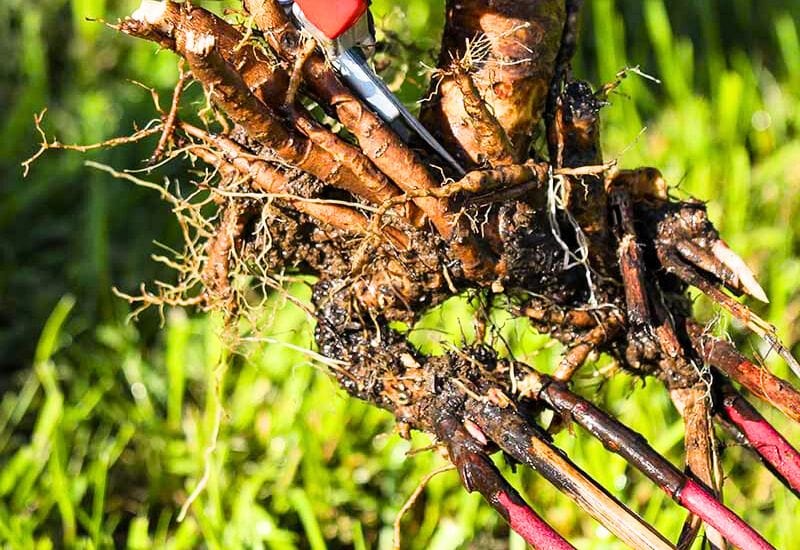
Now, note that peonies rarely need dividing at all, unlike other perennials, but you may wish to propagate them, and have more plants for next yea. And fall is a good time to do it with herbaceous varieties. After you have cut them back. And here is how.
Now you can move the clump of your herbaceous peony you have divided to its new home.
And now, look down to the feet of your peonies, whichever type they are.
6: Mulch All Types Of Peonies To Keep Their Roots Safe In Winter
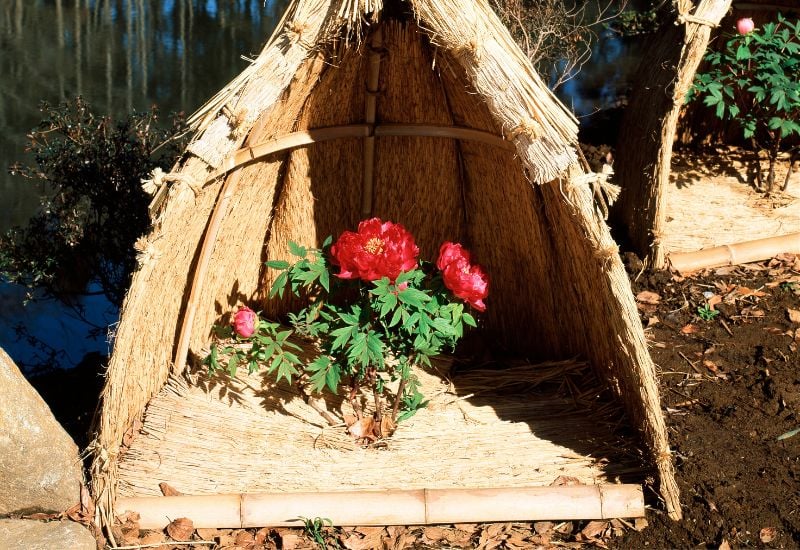
Simple, mulch the base of your peonies so the roots keep warm and healthy over the harsh winter season. And this is what you would do with any other plant. How!
That’s simple, but didn’t we skip a step?
7: Do Not Fertilize Your Peonies At The End Of The Season!
No, we didn’t skip a step… You should not mulch your peonies in fall! They have come to the end of the growing and reproductive phases, and they need no nutrients now! In fact, you could trick them into growing at the wrong time, and then, the new buds would freeze. So, come spring, they will be much weaker.
Fertilize your peonies in early spring, when they need it!
But maybe you have a question…
8: Should You Cover Your Peonies Over Winter?
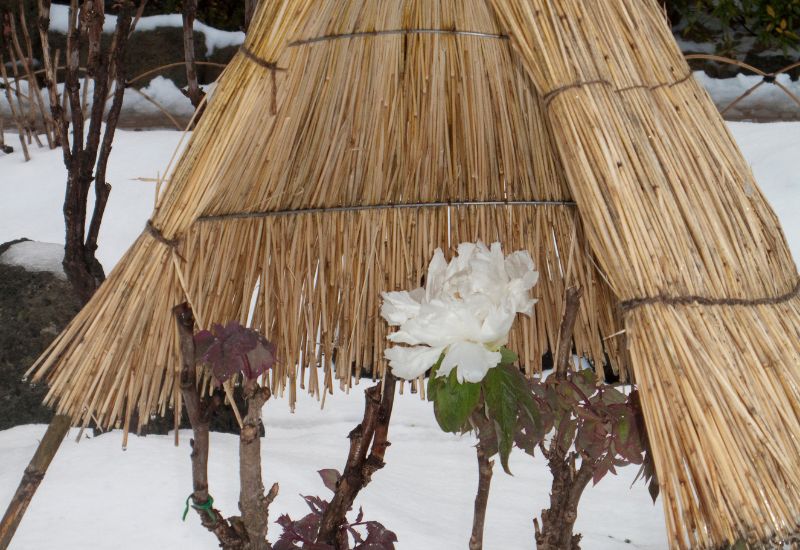
You may think that covering peonies at the end of fall is always a good idea, but it isn’t! Peonies like fresh conditions, even cold in winter!
In fact, they are cold hardy to USDA zone 3, and tree peonies to zone 4. Having said this, if you live in a very cold, borderline region (3 and 4) and especially if your peonies are exposed to winds (very bad idea in any case!), then…
A plant cone for small, young intersectional or tree peonies could be a good idea to cover them, but they are expensive(ish) and usually too small for adult plants.
Make your own then, with a transparent cellophane sheet, place quite a few holes in them and then cover the Itoh or tree peony, but make sure you use some structure or support (like sticks, literally) so that the branches are at least 6 inches from the sheet (15 cm).
I see no reason to cover herbaceous peonies, unless you grow them in USDA zone 2…
And finally…
8: Wrap Peonies In Containers Or Take Them Indoors, But Only In Very Cold Climates
I know, peonies in containers are not very common, but they can grow in pots. In case you have them, do the same things you did for those in your garden (improve soil, prune, mulch), but if you live close to their lowest hardiness zone (5, 4 or 3 and below), then you can…
And this is all! As I said, it is quite simple, and peonies are strong flowering plants indeed, so, with a few easy steps, you can be sure you will enjoy their lush leaves and sweet blossoms next year too!

Written By
Amber Noyes
Amber Noyes was born and raised in a suburban California town, San Mateo. She holds a master’s degree in horticulture from the University of California as well as a BS in Biology from the University of San Francisco. With experience working on an organic farm, water conservation research, farmers’ markets, and plant nursery, she understands what makes plants thrive and how we can better understand the connection between microclimate and plant health. When she’s not on the land, Amber loves informing people of new ideas/things related to gardening, especially organic gardening, houseplants, and growing plants in a small space.
